
|
|
Font Size:
|
||||
|
|
|
|
||||
STATISTICAL BRIEF #165:
Personal Health Behaviors for Heart Disease Prevention among the U.S. Adult Civilian Noninstitutionalized Population, 2004
Highlights
- Overall, over 93 percent of adults are engaging in at least one of three recommended behaviors to prevent heart disease: not smoking, exercising regularly, and maintaining a healthy weight.
- More than half (56.6 percent) of the U.S. adult population said that they engage in moderate to vigorous physical activity three times a week.
- More than three-fourths (78.8 percent) of the U.S. adult population reported that they currently do not smoke.
- A little over one-third (38.6 percent) of the U.S. adult population reported maintaining a healthy weight by keeping their BMI under 25 and thus are not considered overweight, or obese, according to the recommended guidelines.
- A higher percentage of men engaged in moderate to vigorous physical activity at least three times a week than women (60.3 percent versus 53.1 percent).
- Among those who were ever told by a doctor that they had heart disease, more than 18 percent (18.3) continued to smoke.
Introduction
Heart disease is the leading cause of death for both men and women in the United States. Researchers have identified several risk factors that predispose individuals to developing heart disease. These factors include gender, heredity, age, physical inactivity, smoking, obesity and overweight, high blood pressure, high cholesterol, and diabetes.
The American Heart Association guidelines recommend several prevention measures that can help prevent or delay the onset of heart disease. By following these guidelines, one can reduce the possibility of having heart disease. Some of these measures, like checking blood cholesterol and blood pressure, are part of having a routine medical checkup. Other measures--such as not smoking, engaging in physical exercise regularly, and maintaining healthy weight (body mass index [BMI] = <25)--are self-initiated measures a person can take to reduce the risk of heart disease.
This Statistical Brief looks at how the U.S. adult civilian noninstitutionalized population is incorporating these three self-initiated measures of heart disease prevention into their lives. The smoking estimates are derived from the self-administered questionnaire used in the Household Component of the Medical Expenditure Panel Survey (MEPS-HC). Other estimates are derived from the core MEPS-HC questionnaire. All differences discussed in the text are statistically significant at the 0.05 level or better.
Findings
About 12.0 percent (25.8 million) of the U.S. adult population were told by a doctor that they had heart disease (see Definitions).
More than half (56.6 percent) of the U.S. adult population said that they engage in moderate to vigorous physical activity three times a week (figure 1). Adults who were never told by a doctor that they had heart disease engaged in regular physical exercise more than those who were told by a doctor that they had indicators of heart disease (57.9 percent versus 46.3 percent).
Over one-third (38.6 percent) of the U.S. adult population was found to have maintained a healthy weight (see Definitions), and not considered overweight, or obese. Among those who were ever told by a doctor that they had heart disease, 33.9 percent had a healthy weight as compared with 39.3 percent of those who were never told that they had heart disease.
More than three-fourths (78.8 percent) of the U.S. adult population do not currently smoke. Among those who were ever told by a doctor that they had indictors of heart disease, more than 18 percent (18.3) continued to smoke.
Overall, over 93 percent of adults are engaging in at least one of three recommended behaviors for preventing heart disease: not smoking, exercising regularly, and maintaining a healthy weight (figure 2). The majority of adults engage in one or two of the recommended preventive measures (75.5 percent). Only 18.0 percent engage in all three behaviors, and 6.5 percent are not taking any of the three recommended measures.
The likelihood of adhering to the recommended behaviors to reduce the risk of developing heart disease varied according to a number of demographic characteristics.
Age
Engaging in moderate to vigorous regular physical activity at least three times a week was found to be strongly related to age. Younger ages (18 to 44) were more likely to engage in regular exercise more than those who were older (45 to 64 and 65 and older) (59.9 percent versus 55.3 percent and 48.5 percent, respectively) (figure 3).
Similarly, age was correlated with maintaining a healthy weight. A higher percentage of those between the ages of 18 and 44 had a healthy weight as compared with those who were in the older age groups 45 to 64 and 65 and older (43.7 percent versus 31.4 percent and 37.3 percent, respectively).
Smoking behavior also varied substantially by age. The elderly (65 and older) were more likely than younger adults (18 to 44 and 45 to 64) to be current non-smokers (89.7 percent versus 76.1 percent and 77.7 percent, respectively).
Race/ethnicity
Non-Hispanic whites were more likely to have engaged in moderate to vigorous physical activity at least three times a week as compared with Hispanics or non-Hispanic blacks (58.5 percent versus 51.4 percent and 52.5 percent, respectively) (figure 4).
Non-Hispanic whites were more likely to have maintained a healthy weight than either Hispanics or non-Hispanic blacks (39.8 percent versus 32.1 percent and 29.7 percent, respectively).
Hispanics were more likely to be non-smokers (84.2 percent) compared with non-Hispanic whites and non-Hispanic blacks (77.8 percent and 76.3 percent, respectively).
Sex
Men were more likely to have engaged in moderate to vigorous physical activity at least three times a week than women (60.3 percent versus 53.1 percent) (figure 5).
Women were more likely than men to have maintained a healthy weight (45.1 percent versus 31.7 percent).
More than 80 percent (81.7) of women did not currently smoke compared with 75.7 percent of men.
Education level
A higher percentage of adults with at least some college education engaged in moderate to vigorous physical activity at least three times a week compared with those who had only a high school or less than high school education (60.8 percent versus 55.3 percent and 48.3 percent, respectively) (figure 6).
Higher education was found to be related to maintaining a healthy weight. A higher percentage of adults with at least some college had a healthy weight compared with those with up to a high school or less than a high school education (41.2 percent versus 36.2 percent and 36.1 percent, respectively).
Education level was also found to be related to smoking. There was a higher percentage of non-smokers among those with a college education compared with those with a high school or less than a high school education (85.5 percent versus 73.8 percent and 69.9 percent, respectively).
Data Source
The estimates in this Statistical Brief were derived from MEPS 2004 Full Year Data File (HC-089). Estimates for BMI, physical activity, and smoking variables were drawn only from the persons with a response in those questions.
Definitions
Heart disease
The indicator for heart disease was drawn from questions pertaining to various forms of heart disease (coronary heart disease, angina, heart attack, stroke, or any other heart-related disease). For each of the conditions listed, the following question was asked: "(Have/Has) PERSON ever been told by a doctor or other health professional that PERSON had [condition]?"
Racial and ethnic classifications
Classification by race and ethnicity is based on information reported for each family member. Respondents were asked if each family member's race was best described as American Indian, Alaska Native, Asian or Pacific Islander, black, white, or other. They also were asked if each family member's main national origin or ancestry was Puerto Rican; Cuban; Mexican, Mexicano, Mexican American, or Chicano; other Latin American; or other Spanish. All persons whose main national origin or ancestry was reported in one of these Hispanic groups, regardless of racial background, were classified as Hispanic. Since the Hispanic grouping can include black Hispanic, white Hispanic, Asian and Pacific Islanders Hispanic, and other Hispanic, the race categories of black, white, Asian and Pacific Islanders, and other do not include Hispanic. MEPS respondents who reported other single or multiple races and were non-Hispanic were included in the other category.
Education level
Respondents were asked to report the highest grade or schooling year ever completed by each family member as of the date of the interview: not a high school graduate (grade less than 12), high school graduate/GED/other (grade 12 equivalent), and at least some college.
Healthy weight
BMI = less than 25
Body mass index (BMI)
Body mass index is a measure of body fat based on height and weight that applies to both adult men and women.
BMI categories
- Underweight: BMI less than 18.5
- Normal weight: BMI between 18.5 and 24.9
- Overweight: BMI between 25.0 and 29.9
- Obesity: BMI of 30.0 or greater
Adult = 18 and older as of the Round 2 or 4 interview date (AGE42X >= 18).
Smoking
Questions about smoking are asked annually in the MEPS adult self-administered questionnaire. This question asks the following: Do you currently smoke? Yes or No
About MEPS-HC
MEPS-HC is a nationally representative longitudinal survey that collects detailed information on health care utilization and expenditures, health insurance, and health status, as well as a wide variety of social, demographic, and economic characteristics for the civilian noninstitutionalized population. It is cosponsored by the Agency for Healthcare Research and Quality and the National Center for Health Statistics.
For more information about MEPS, call the MEPS information coordinator at AHRQ (301-427-1656) or visit the MEPS Web site at http://www.meps.ahrq.gov/.
References
For a detailed description of the MEPS survey design, sample design, and methods used to minimize sources of nonsampling error, see the following publications:
Cohen, J. Design and Methods of the Medical Expenditure Panel Survey Household Component. MEPS Methodology Report No. 1. AHCPR Pub. No. 97-0026. Rockville, Md.: Agency for Health Care Policy and Research, 1997.
Cohen, S. Sample Design of the 1996 Medical Expenditure Panel Survey Household Component. MEPS Methodology Report No. 2. AHCPR Pub. No. 97-0027. Rockville, Md.: Agency for Health Care Policy and Research, 1997.
Cohen, S. Design Strategies and Innovations in the Medical Expenditure Panel Survey. Medical Care, July 2003: 41(7) Supplement: III-5-III-12.
For information on heart disease, see the following:
ABCs of Preventing Heart Disease, Stroke and Heart Attack, American Heart Association, Feb. 2007. Available at http://www.Americanheart.org
Heart Disease--Facts and Statistics: U.S. Department of Health and Human Services, Centers for Disease Control and Prevention: Atlanta, Ga. 2006. Available at http://www.cdc.gov/heartdisease/statistics.htm
Obesity Education initiative: Calculate your BMI (body mass Index). National Heart, Lung and Blood Institute, Bethesda, Md. Available at http://www.nhlbisupport.com/bmi/
Suggested Citation
Soni, A. Personal Health Behaviors for Heart Disease Prevention among the U.S. Adult Civilian Noninstitutionalized Population, 2004. Statistical Brief #165. March 2007. Agency for Healthcare Research and Quality, Rockville, Md. http://www.meps.ahrq.gov/mepsweb/data_files/publications/st165/stat165.shtml
AHRQ welcomes questions and comments from readers of this publication who are interested in obtaining more information about access, cost, use, financing, and quality of health care in the United States. We also invite you to tell us how you are using this Statistical Brief and other MEPS data and tools and to share suggestions on how MEPS products might be enhanced to further meet your needs. Please e-mail us at mepspd@ahrq.gov or send a letter to the address below:
Steven B. Cohen, PhD, Director
Center for Financing, Access, and Cost Trends
Agency for Healthcare Research and Quality
540 Gaither Road
Rockville, MD 20850
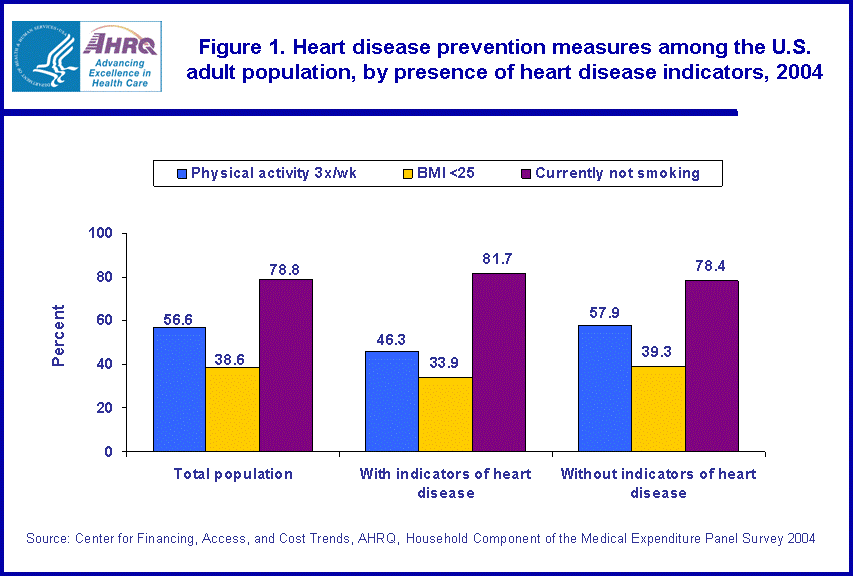 |
||||||||||||||||||||||||||||||
|
||||||||||||||||||||||||||||||
|
|
||||||||||||||||||||||||||||||
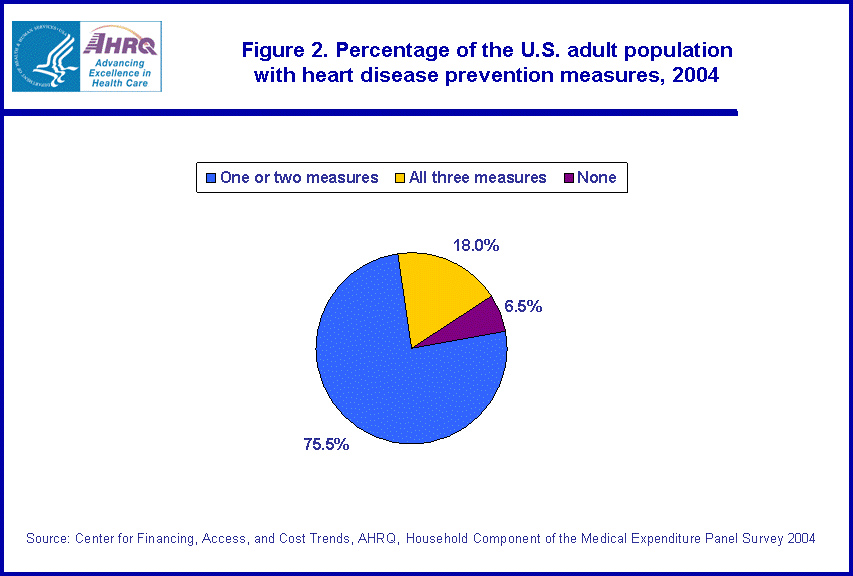 |
||||||||||||||||||||||||||||||
|
||||||||||||||||||||||||||||||
|
|
||||||||||||||||||||||||||||||
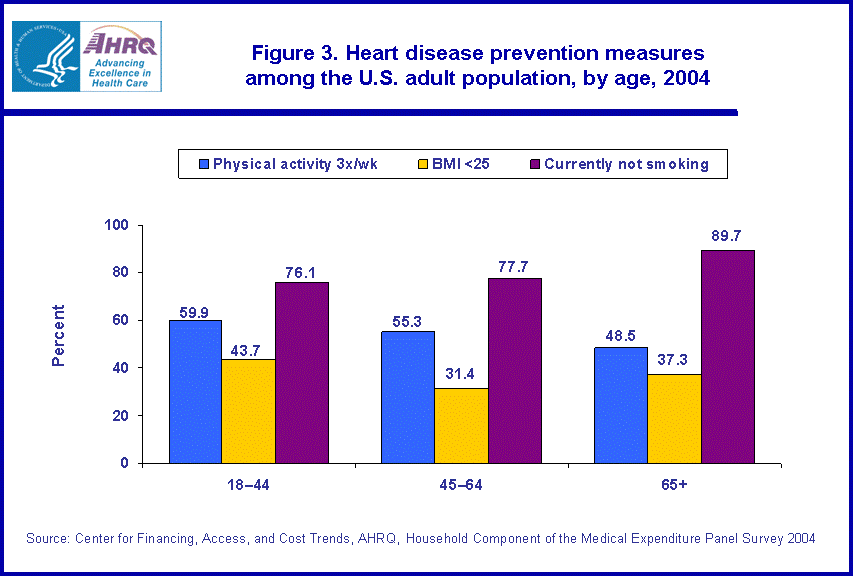 |
||||||||||||||||||||||||||||||
|
||||||||||||||||||||||||||||||
|
|
||||||||||||||||||||||||||||||
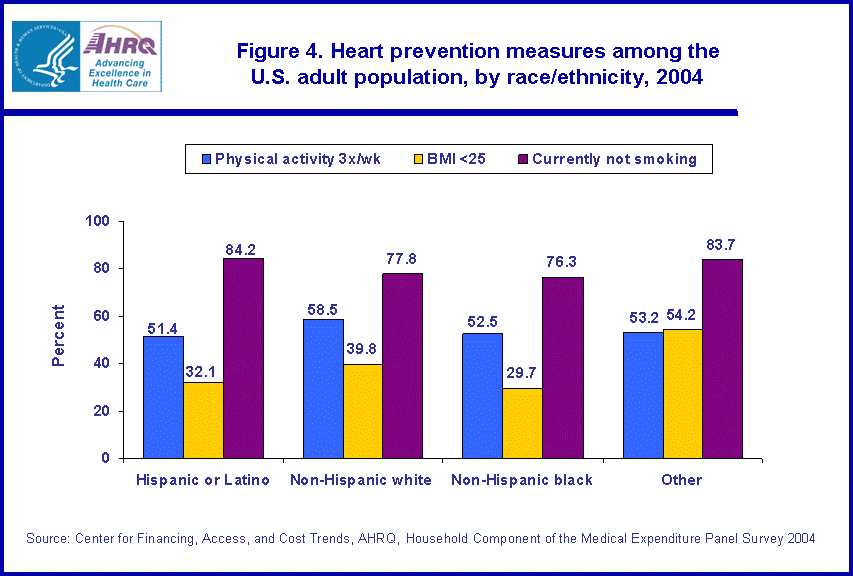 |
||||||||||||||||||||||||||||||
|
||||||||||||||||||||||||||||||
|
|
||||||||||||||||||||||||||||||
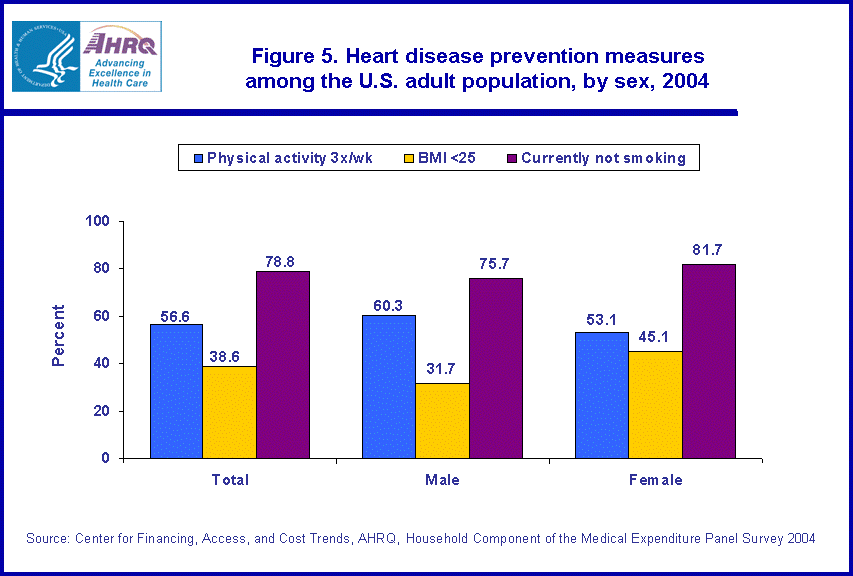 |
||||||||||||||||||||||||||||||
|
||||||||||||||||||||||||||||||
|
|
||||||||||||||||||||||||||||||
 |
||||||||||||||||||||||||||||||
|
||||||||||||||||||||||||||||||
|
|
||||||||||||||||||||||||||||||


